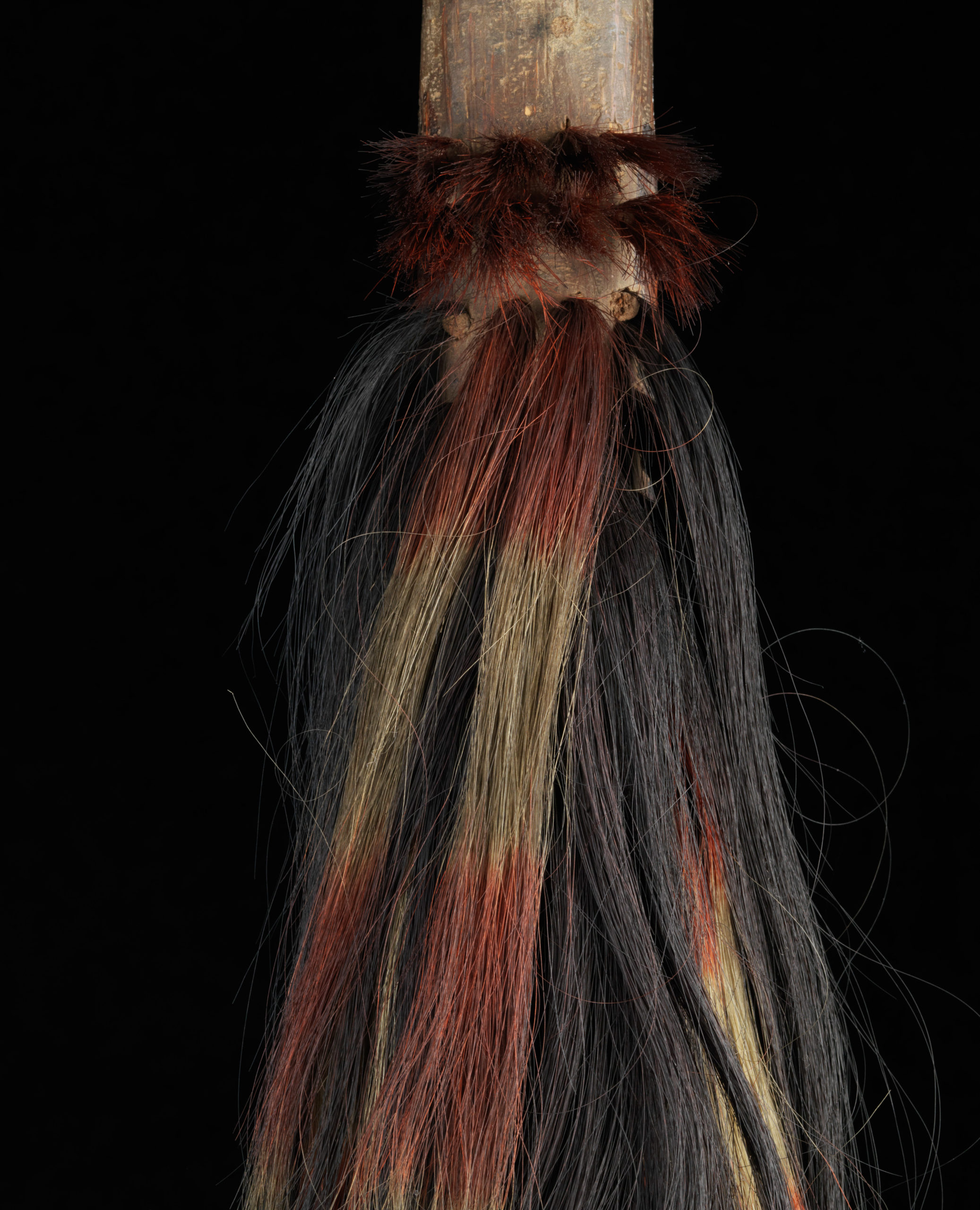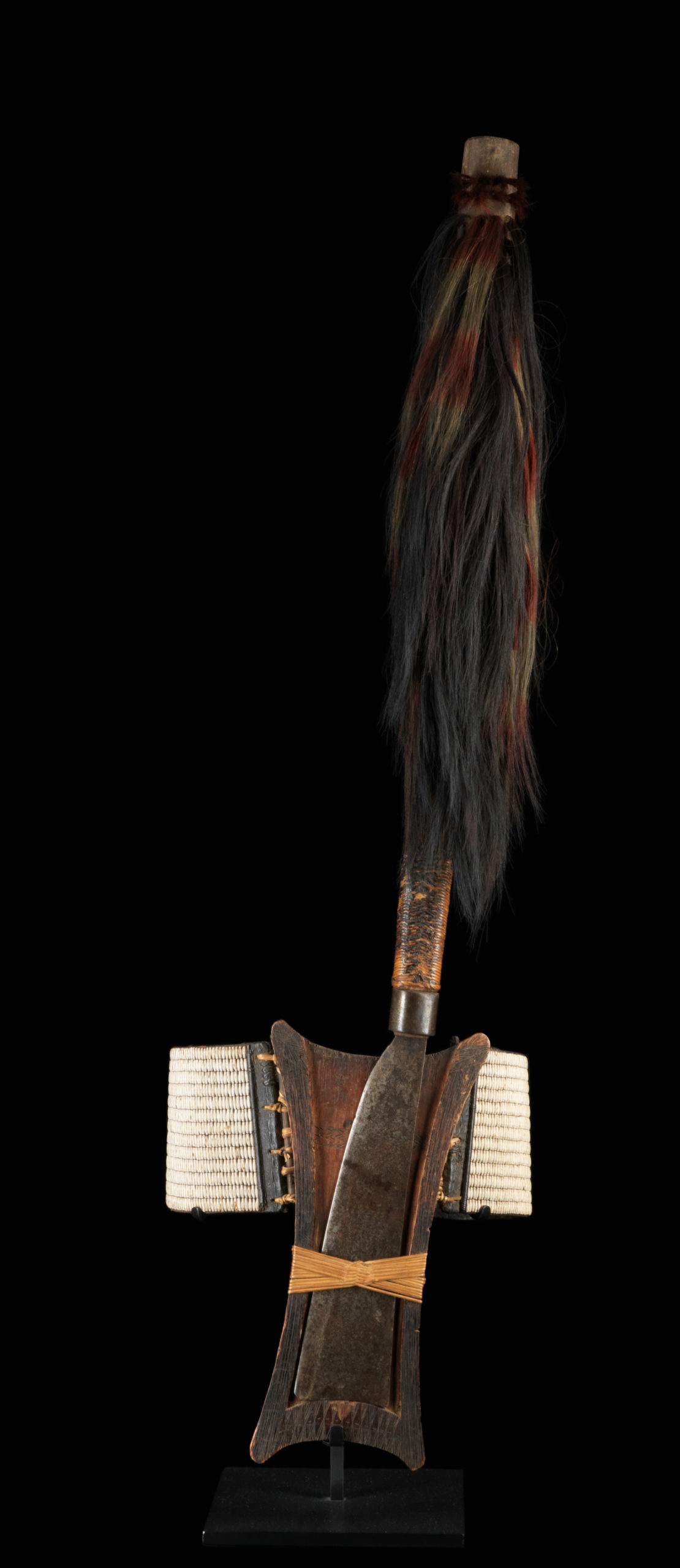Hip Belt with „dao“
Based on the incised drawings in the hip belt holder, the belt can be assigned to the above mentioned Naga groups.
From the north of Assam to the south of Burma and Siam, the dao is a widespread all-purpose tool, used from shaving and haircutting to felling trees and processing wood of all kinds and thicknesses. It is often the only tool available besides small knives. The sharpening is always one-sided, which is good for the cutting ability when used correctly, namely oblique strokes of 15 – 40 °, measured on the cut material. The dao is carried on strong rattan or bark fibre straps in the back over the buttocks; a box-shaped wooden element serves as a sheath. The handle, which can be quite long, is often finished with red dyed human or animal hair and extends into the area of the shoulder blades or even beyond. The sheaths can be closed or open on the side facing away from the wearer.
The cowrie snail was used for the decoration on this hip belt, which gives the wearer prestige and prosperity. It is, among other things, a historical form of primitive money, which was widely used in Africa, East and South Asia and the South Seas as a pre-coinage currency, but in South Asia its use ended in the 19th century.
Because of its similarity to the female sexual organ, the cowrie snail is attributed great importance as a symbol of fertility. In Japan and India, the cowrie snail is still sometimes held in the hand of the woman giving birth as a talisman.
| Object | Hip belt with „dao“ |
| Culture | Naga, Upper Konyak, Khiamniungan, Yimchungrü, Chang |
| Time | 19th century |
| Dimensions | Length dao 67cm, hip belt height 11 cm, circumference 72 cm |
| Material | Steel, wood, goat hair, cowrie snail, textile, rattan |








